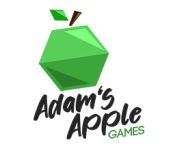5 Challenges of Digital Board Games
- Jason

- Jul 12, 2020
- 3 min read
Updated: Oct 20, 2020

We love board games. Nothing is better than sitting across from friends (or soon to be friends), laughing and sharing titles new and old. What do you do when schedules or a world gone crazy keeps you from gaming? We think folks should try and use technology to close the gap.
Digitally translating board games is more than copying the art into a game. If you’re going to be true to experience, you’ll need to overcome the inherent shortcomings of online environments and offer some solutions to classic board game problems.
We see five critical aspects to translation:

Table Layout - Layout starts with making sure the board, pieces and/or cards all fill the digital space appropriately. It’s more than just making sure everything is there; you’ll need to make “the space” as comfortable and natural as possible. Facilitating set up helps players get to the fun quicker, but they also have to acclimate themselves to the technology and environment.
Functionality - Rules enforcement shouldn’t be optional. One aspect of digital board gaming that can be better than it’s RL counterpart is reducing the burden of teaching and monitoring the rules. When folks don’t have to agonize over the rules, it leaves them free to enjoy each other a little more.
Player Prompts - How many times in any given gaming session do you ask “Who’s turn is it?” or “What am I doing?” Building that into the platform means no one has to keep the table moving. Helping players identify their options makes all titles more approachable and fun.

Unique Mechanics - What makes a game special in your collection? Part of getting a board game translation right is identifying the “secret sauce” of any given title. How do you preserve the game's promise, drama or suspense? It’s critical that you make the unique mechanics seamless and approachable if you’re gonna preserve what makes that title so exciting.
Human Interaction - As much as possible, we try to get the technology out of the way so you can enjoy your people and games. Keeping things social is critically important.
Over the next few months, we’ll be talking about our method to address these five aspects - one at a time and in depth. Subscribe! Next time we tackle Table Layout.
Release Updates
Publisher: Gamewright
Sovranti Developer: Eric
Last week, Sushi Go Party opened for testing with the Chef’s “My First Meal” Menu. Eric, developer for the adaptation, celebrated the event with a few games with beta testers. He promises more excitement as he finishes up the other cards and full game features.
Eric: “Personally, I was very excited to get this version out to our Beta testing team! Hearing about their excitement and reception has been truly motivating. I’m looking forward to implementing the rest of the cards and menus.”
‘My First Meal’ chef’s menu update included:
Fixed Maki and Miso Soup scoring bugs.
Fix how Wasabi and Nigiri are visually grouped and scored.
Reduced time for scoring animations to start and complete.
Created and adjusted chat messages to be more clear and effective.
Changed the hand layout when a player’s selected card is confirmed.
Fixed timing issue with card selection/confirmation that caused client side crashing/freezing.
Fix podium scoring to allow for ‘ties’ and add final score to bottom.
A new feature added to Sushi Go Party is its on the table scoring. Scoring starts by looping through each ‘group’ and presenting the group’s score, in text form.
First, each group is totaled, even groups that receive 0 points, to show how they are all contributing to the final round score for a player.

Then, we ‘throw’ the individual scores into the total that represents the ‘round score’. Once each group score reaches the round score’s text field, it disappears and simultaneously gets added to the round score total.

Each player's round score is animated, around the table. Once all players have been scored, we clean up the current round cards and scores and move onto the next round!
Publisher: Adam's Apple Games
Sovranti Developer: Paul
A version of Planet Unknown is out for testing. Paul, Sovranti’s developer on the adaptation, is focusing on the details to be sure to capture what made this game such a success on Kickstarter. In addition to being sure this version of the game is Gen Con worthy, he will be working on goal card, tech unlocks and civ card implementation.
Paul: “This is the week of the first playable game loop. Much of the difficulties in getting to the game loop have been architected and applied to the existing logic of the game. Fresh new areas are on the horizon, and testing will begin on what we have so far for refinement.”

This update included:
A new approach to biomass and rover tokens.
Energy tiles now recursively check across any touching energy squares throughout the planet to determine what resource tracks can be advanced.
In the works:
Apply Sovranti card logic to the Planet Unknown game
Goal card definitions and affect in the end game scores
Tech unlocks for the base corporation
Civ cards

.png)









Comments